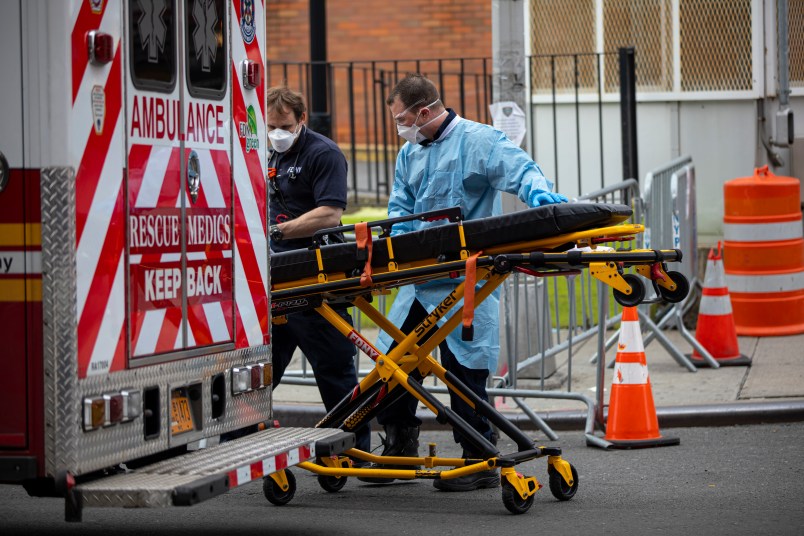After lobbying from Washington state officials, the Trump administration decided on Monday to issue an unprecedentedly broad order allowing hospital emergency rooms nationwide to divert patients away from their wards.
The change will allow emergency rooms to send patients for screening away from the hospital campus.
That would normally be banned under a 1980s federal law which prohibits emergency rooms from turning patients away without diagnosis and treatment. The change suspends enforcement of the law so far as it applies to screening patients, allowing ERs to screen potential patients away from the emergency facility to test people for signs of COVID-19, the disease caused by the novel coronavirus.
The change applies nationally under what is known as a blanket waiver.
The Centers for Medicaid & Medicare Services made the policy shift after lobbying from Washington state and professional associations representing ER doctors and hospitals.
Washington state officials had agitated for the change under a wide-ranging petition to the federal government for emergency changes to the state’s Medicaid program in order to respond to the crisis. In its application, Washington had pushed for a blanket waiver to the law, and not for one that applied only for the state.
CMS’s decision to issue the waiver signals the severity of the crisis, in part because of the extent to which the baseline guarantee of treatment at an emergency room is embedded into the U.S. health care system.
One health policy analyst previously told TPM that the law was a “bottom-line protection for people in the United States.”
Waivers to the law – the 1986 Emergency Medical Treatment and Labor Act – have seldom been issued broadly. Typically, the federal government suspends enforcement of the law for fixed periods of time in response to localized disasters that tax the resources of overburdened hospital emergency departments, while closely monitoring how patient volume changes.






